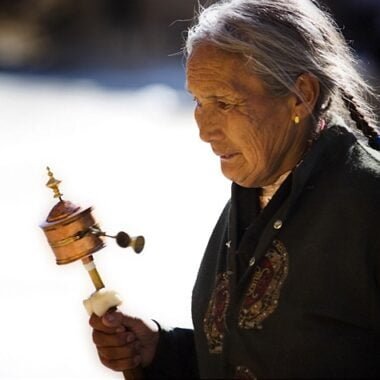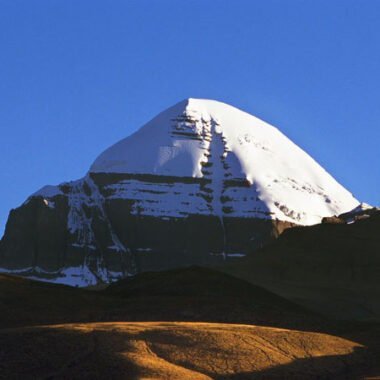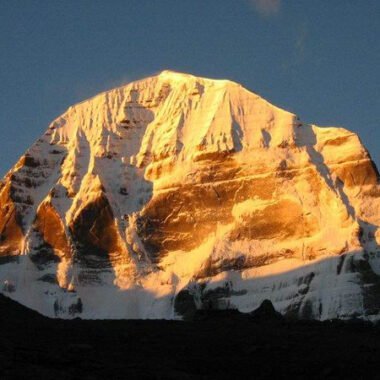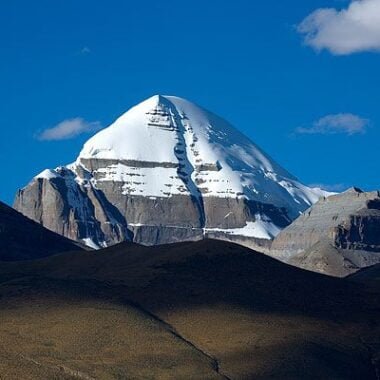How to Go to Kailash Mansarovar: A Complete Guide
Introduction to Kailash Mansarovar Kailash Mansarovar is one of the most sacred pilgrimage sites for Hindus, Buddhists, Jains, and Bonpo. Located in…
Introduction to Kailash Mansarovar
Kailash Mansarovar is one of the most sacred pilgrimage sites for Hindus, Buddhists, Jains, and Bonpo. Located in the remote western part of Tibet, Mount Kailash is revered as the abode of Lord Shiva, while Lake Mansarovar is considered the holiest freshwater lake. The journey to Kailash Mansarovar is not just a trek but a spiritual experience, attracting thousands of pilgrims and adventurers each year.
Best Time to Visit Kailash Mansarovar
The best time to visit Kailash Mansarovar is between Mid April and Mid October when the weather is relatively mild and the roads are accessible. During these months, the temperature ranges from 5°C to 20°C, making it ideal for trekking and performing the Kailash Kora, a circumambulation around Mount Kailash.
Routes to Kailash Mansarovar
There are several routes to reach Kailash Mansarovar, depending on your starting point and mode of travel.
- Via Lhasa, Tibet:
- Arrival in Lhasa: Fly into Lhasa, the capital of Tibet, where you can acclimatize to the high altitude.
- Lhasa to Shigatse: Travel by road or train from Lhasa to Shigatse, Tibet’s second-largest city.
- Shigatse to Saga or Zhongba: Continue by road to Saga / Zhongba, crucial stopover before reaching Darchen.
- Saga / Zhongba to Darchen: The final leg of the journey takes you to Darchen, the gateway to Mount Kailash.
- Via Kathmandu, Nepal:
- Kathmandu to Tibet Border: Start your journey in Kathmandu, Nepal. From here, you can travel by road to the Nepal-Tibet border (Rasuwa Gadhi) and then enter Tibet.
- Tibet Border to Saga: After crossing the border, you’ll drive through the Tibetan plateau, passing through the towns of Kyirong and Saga.
- Saga to Darchen: From Saga, continue your journey to Darchen, the base camp for the Mount Kailash Kora.
- Via India:
- Lipulekh Pass Route: This route begins in Delhi, India, and travels through the state of Uttarakhand to reach the Lipulekh Pass, where you enter Tibet.
- Nathu La Pass Route: Another route starts in Delhi and goes through the state of Sikkim, crossing into Tibet via the Nathu La Pass.
Permits and Documentation
Traveling to Kailash Mansarovar requires several permits:
- Chinese Visa: Obtain a Chinese visa from the Chinese embassy in your home country.
- Tibet Travel Permit: This permit is mandatory for all foreigners traveling to Tibet.
- Aliens’ Travel Permit: Required for travel to restricted areas like Mount Kailash.
- Military Permit: Necessary for regions near the Chinese-Indian border.
It’s advisable to book your trip through a registered travel agency in Tibet that can assist with obtaining these permits.
The Kailash Kora and Mansarovar Yatra
The Kailash Kora is an approx. 52-kilometer trek around Mount Kailash, considered one of the holiest pilgrimages. Pilgrims believe that completing the Kora washes away sins and brings blessings. The trek usually takes 3 days to complete and is physically demanding due to the high altitude and rugged terrain.
Lake Mansarovar is another significant part of the pilgrimage. Pilgrims take a dip in the lake’s holy waters, believing it purifies the soul and leads to spiritual enlightenment.
What to Pack for the Journey
- Clothing: Layered clothing, warm jackets, thermal wear, and rain gear.
- Footwear: Sturdy trekking boots and comfortable walking shoes.
- Medical Supplies: Altitude sickness medication, personal first aid kit, and any prescribed medications.
- Essentials: Passport, permits, extra passport-sized photos, and cash in small denominations.
- Other Items: Sunglasses, sunscreen, hikking pole, water bottles, snacks, and a good quality backpack.
Health and Safety Considerations
The high altitude and remote location of Kailash Mansarovar require careful preparation. Acclimatize properly in Lhasa or Kathmandu, stay hydrated, and consult a doctor before embarking on the journey. It’s also wise to travel with a group and have a guide who is familiar with the region.









